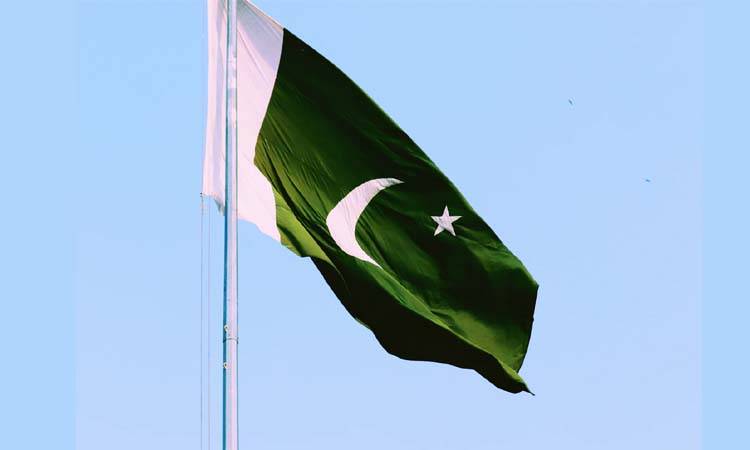
The federal govt allots Rs21.72 billion for the health sector in budget 2021-22
ISLAMABAD: The government has earmarked Rs21.72 billion to 20 ongoing and 26 new projects in the health sector under the Public Sector Development Programme 2021-22.
The budget documents showed that out of the total allocated amount, Rs13.07 billion has been allocated to out-going projects while Rs8.65 billion has been earmarked for new projects.
A further breakdown of the amount showed Rs5.6 billion has been earmarked for the Sehat Sahulat Programme and Prime Minister’s National Health Insurance Programme phase-II.
While Rs2.2 billion has been allocated for the extension of the Intensive Care Department of Mother and Child Health Centre and Children Hospital at the Pakistan Institute of Medical Sciences (PIMS) in Islamabad.
As per the Public Sector Development Programme (PSDP) document, Rs2 billion has been set aside for the establishment of a 200-bed hospital in Islamabad. The amount also covers the feasibility costs of the project.
The government has also allocated Rs1.75 billion for the establishment of a 200-bed Accident and Emergency Centre at the Pakistan Institute of Medical Sciences, Islamabad, including feasibility.
Over Rs 1.6 billion has been earmarked for the establishment of a 200- bed Centre of Excellence for Gynecology and Obstetrics in Rawalpindi. While an amount of Rs1 billion has been allocated for the establishment of the Federal Government Polyclinic (PGMI)-II at G-11/3, Islamabad. The allocated amount also includes the feasibility costs.
Similarly, Rs879 million have been allocated for the replacement and up-gradation of HVAC plant room equipment and allied works at PIMS, Islamabad. The government has also earmarked Rs750 million for the development of the Integrated Disease Surveillance and Response System (IDSRS) with Public Health Laboratories Network (PHLN) and Workforce Development for transition of Field Epidemiology and Laboratory Training Program (FELTP).
An amount of Rs713.152 million has been allocated for the up-gradation of the rural health facilities and strengthening of the health department for effective health care provision.
An amount of Rs 500 million has been allocated to upgrade the Neurosurgery Department and provide essential equipment in the Pakistan Institute of Medical Sciences, Islamabad.
Meanwhile, in a recent report released by Economic Survey 2021, Pakistan is spending far less on healthcare than what is recommended by the World Health Organisation (WHO).
The country is spending a meagre 1.2% of its GDP on healthcare while the WHO has recommended 5% of the GDP to be spent on the sector.
However, the figure is slightly more than 2017-18's (1.2% of GDP). The cumulative health expenditure by the federal and provincial governments went up 14.35% from Rs421.78 billion last year to Rs482.27 billion this year.
During the current fiscal, the federal government had allocated Rs20.194 billion for 71 health projects under the Public Sector Development Programme.
As far as healthcare projects go, the government introduced an Rs70bn healthcare programme to mitigate the impact of the COVID-19 pandemic by upgrading health facilities, sewerage system, solid waste management, drinking water supply, and education.
The country’s health indicators continued to record improvement.
The life expectancy at birth increased from 66.9% in 2017 to 67.3% in 2019, while the infant mortality rate (per 1,000 live births) went down from 58.8% in 2017 to 55.7 % in 2019.
Moreover, the maternal mortality rate (per 100,000) has gone down from 276 in 2015 to 189 in 2019 while under five years mortality rate (per 1,000) has fallen from 71.6% in 2017 to 67.2% in 2019, and the population growth rate has recorded a decline from 2% in 2017 to 1.9% in 2019.
Compared with other Asian nations, Pakistan has the highest life expectancy at birth, infant mortality rate and under-five mortality rate and population growth rate.
According to the Economic Survey 2021, Pakistan has recorded a high number of cases of malnutrition, as per various reports by international groups. Around 40% of children under the age of five years are stunted and another 29% are underweight.
“The proportion of overweight children under five years of age is 9%. Similarly, more than half (57%) of adolescent girls and 42% women of reproductive age in the country are anaemic," states the report.
The economic costs of malnutrition are high and persistent with around 3% ($7.6 billion) of loss of GDP every year in the country due to low productivity from the poor physique, cognitive development, schooling, and increased health care costs.
The report also revealed that around 18% (38 million) of the country’s population was severely food insecure. The number of healthcare providers in the country has also registered an increase during the last year.
-DN Report

Dr Muattar Hanif
The author is Editor at Dental News Pakistan and can be reached at newsdesk@medicalnewsgroup.com.pk

